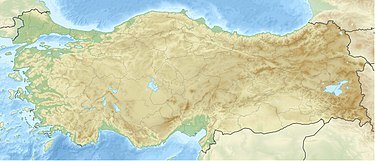Introduction
In the annals of history, certain events stand out as tragic reminders of the destructive power of nature. One such event occurred on March 28th, 1970, when western Turkey was struck by a devastating earthquake. This seismic catastrophe, which occurred at approximately 23:05 local time, resulted in the loss of countless lives and left a lasting impact on the affected region.
The Impact of the Earthquake
The earthquake that struck western Turkey in 1970 was a force to be reckoned with. With a magnitude of 7.2, it unleashed its fury upon the unsuspecting communities, causing widespread destruction and loss. The toll was staggering, with 1,086 lives lost and over 1,200 individuals injured.
The devastation was not limited to human casualties alone. The earthquake wreaked havoc on the region’s infrastructure, leaving buildings in ruins and rendering countless homes uninhabitable. The affected communities were left grappling with the aftermath, struggling to rebuild their lives amidst the rubble.
The Vulnerability of Seismic Regions
The earthquake in western Turkey served as a stark reminder of the vulnerability of regions prone to seismic activity. Turkey lies on the boundary between the Eurasian and Arabian tectonic plates, making it particularly susceptible to earthquakes. The country has a long history of seismic events, with earthquakes occurring frequently throughout its past.
Despite this knowledge, the disaster in 1970 highlighted the need for improved infrastructure and disaster preparedness in seismic regions. It served as a wake-up call for authorities and communities alike, emphasizing the importance of implementing stringent building codes and emergency response plans.
Rebuilding and Recovery
In the wake of the devastating earthquake, the affected communities rallied together to rebuild and recover. The Turkish government, along with international aid organizations, provided assistance to those in need. Efforts were made to provide temporary shelter, medical aid, and support for the displaced individuals.
The rebuilding process was a long and arduous one, requiring significant resources and dedication. However, the resilience of the affected communities shone through as they worked tirelessly to restore their homes and livelihoods. The disaster served as a catalyst for change, prompting a reevaluation of building practices and seismic safety measures.
Lessons Learned
The earthquake in western Turkey in 1970 left an indelible mark on the collective consciousness of the nation. It served as a reminder that nature’s forces are unpredictable and unforgiving. The disaster prompted a reevaluation of disaster preparedness measures and led to significant improvements in infrastructure and building codes.
Today, Turkey continues to face the threat of earthquakes, but the lessons learned from the devastating event in 1970 have not been forgotten. The country has made great strides in mitigating the risks associated with seismic activity, implementing measures to ensure the safety of its citizens.
Conclusion
The earthquake that struck western Turkey on March 28th, 1970, was a catastrophic event that claimed the lives of many and left an indelible mark on the region. The disaster served as a wake-up call, highlighting the vulnerability of seismic regions and the need for improved infrastructure and disaster preparedness.
Through the tireless efforts of the affected communities and the support of the Turkish government and international organizations, the region was able to rebuild and recover. The lessons learned from this devastating earthquake continue to guide Turkey in its ongoing efforts to mitigate the risks associated with seismic activity.

